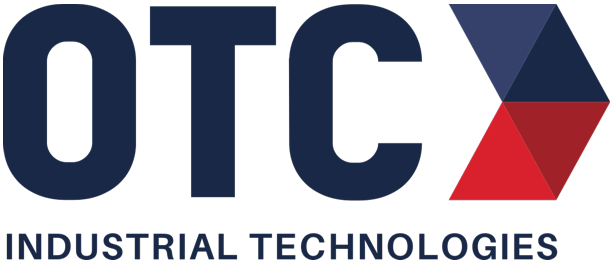Spray Application Overview
1. Air Atomization
Most commonly used for industrial finishing.
Advantages: Complete pattern control. Finest atomization.
Limitations: Uses more air. Creates most fog. Low transfer efficiency.
1.1 Siphon Fed
Uses vacuum created at nozzle to draw material from cup. External atomization.
Advantages: Lowest cost. Less maintenance. Change colors quickly.
Limitations: Operator carries weight of material at gun. Sprays light materials only. One quart maximum. Spray position limited.
1.2 Pressure Fed (External Atomization)
Uses external pressure source, tank or pump, to force material from nozzle. Material and air mix outside of nozzle.
Advantages: Delivers more material than 1.1. Wider viscosity range. Sprays most materials. No air nozzle wear. Spray in any position. Independent control over air and fluid pressures.
Limitations: Consumes most air. Creates most fog.
1.3 Pressure Fed (Internal Atomization)
Material and air mix inside nozzle. This is how most airbrushes function.
Advantages: Less fog than 1.2. Larger patterns. Less air consumption.
Limitations: Coarse atomization. Fixed patterns. Nozzles wear. Fast drying coatings not recommended.
1.4 Pressure Fed (External Atomization) With Heated Material
Same as 1.2 except material is heated to reduce viscosity.
Advantages: Better control. Reduced air and fluid pressures. Limits overspray and rebound. Finer atomization for a better finish. Better adhesion. More film build per coat. Reduced blushing. Reduced solvent use.
Limitations: Not all materials can be heated. Special paint formulations are required. Additional equipment to maintain. Equipment must be explosion proof (electrical). High electrical demand. Reduces pot life for catalyzed coatings.
1.5 Low Pressure Low Volume Atomization
Material is atomized by LVLP jets of air optimally positioned to impinge onto the fluid stream of elliptical cross section (instead of the conventional round cross section) exiting the spray gun.
Advantages: High transfer efficiency (65% to 75%). Sprays well into recesses and cavities. Very Portable system.
Limitations: Atomization not as fine as that of air spray. Not recommended for heavy materials or where high production is required.
1.6 High Volume Low Pressure Atomization
Atomization caused by release of high fluid pressure through small orifice. Most widely used by painting contractors & maintenance painters.
Advantages: High fluid capability. Large patterns. Fastest spray application process. Low air consumption. Limited fog and “bounce back” – permits spraying into cavities.
Limitations: Potentially hazardous hydraulic injection. Higher rate of overspray. Sharp patterns; difficult to blend. Expensive nozzles (tips). Coarse atomization may flood surface. Equipment requires top maintenance.
2. Airless (Hydraulic) Atomization
Atomization caused by release of high fluid pressure through small orifice. Most widely used by painting contractors & maintenance painters.
Advantages: High fluid capability. Large patterns. Fastest spray application process. Low air consumption. Limited fog and “bounce back” – permits spraying into cavities.
Limitations: Potentially hazardous hydraulic injection. Higher rate of overspray. Sharp patterns; difficult to blend. Expensive nozzles (tips). Coarse atomization may flood surface. Equipment requires top maintenance.
2.1 Airless Atomization (Heated)
Airless utilizing heat to reduce viscosity. Used by furniture manufacturers and industrial finishers.
Advantages: Better flow of material. Higher solids per pass of gun. Viscosity control. Finer atomization than 2.
Limitations: Strict maintenance. Same limitations as 2.
2.2 Air-Assisted Airless
Lower fluid pressures than airless (normally below 1000 PSI). Low pressure air is added via the air nozzle to further atomize the already pre-atomized spray. Used by furniture and industrial finishers.
Advantages: Material savings 50% better than air spray plus lower overspray and fog. Less tip wear; longer pump life than airless. Higher film build per pass than air spray.
Limitations: Atomization not as fine as Air Spray. Hydraulic injection may occur. Tip plugging. Strict maintenance.
2.3 Air-Assisted Airless (Heated)
Uses same principle as 2.2 with the addition of heat to reduce viscosity and improve flow.
Advantages: Better flow of material. Higher solids per pass of gun. Viscosity control. Finer atomization than 2.2.
Limitations: Same as 2.2 except with heat to reduce viscosity. Hydraulic injection may occur. Tip plugging. Strict maintenance.
3. Electrostatic Atomization
Voltage difference between paint dispenser (low speed rotating disc or bell) and work causes paint to be attracted to the grounded work. Used by most appliance manufacturers. High production of uniformly shaped parts.
Advantages: High transfer efficiency @ 65-95%. “Wrap” around effect, coating other surfaces. Minimum overspray.
Limitations: Parts must be conductive. Limit to shapes that may be coated. High production rate required. High voltage and spinning cup or disc may be hazardous.
3.1 Electrostatics
Material is atomized using conventional air, airless, or air-assisted airless principles. Particles are electrically charged and attracted to the work. Electricity may be turned off to permit normal spraying.
Advantages: “Wrap” around effect. Material savings through minimized overspray. Use with or without electrical charge.
Limitations: Some conductive materials will require special equipment. Parts must be conductive. Difficult to penetrate cavities or recesses with power supply on.
3.2 Electrostatics (Heated Material)
Same as 3.1 except materials are heated.
Advantages: Ability to use the systems couple together to get all the advantages as in 1.4, 2.1, 2.3 and 3.1.
Limitations: Same limitations as in 1.4, 2.1 and 3.1.
3.3 High Speed Rotational Atomizers
High speed (10K-70K RPM) rotating disc or bell gives exiting paint particles velocity and direction. Voltage differential then takes over and allows electricity charged paint particles to attract themselves to a grounded part.
Advantages: High transfer efficiency. “Wrap” around effect, coating other surfaces. Works well with high solids coatings. Minimum overspray.
Limitations: Parts must be conductive. Limit to shapes that may be coated. High production rate required. High voltage and spinning cup or disc may be hazardous.
